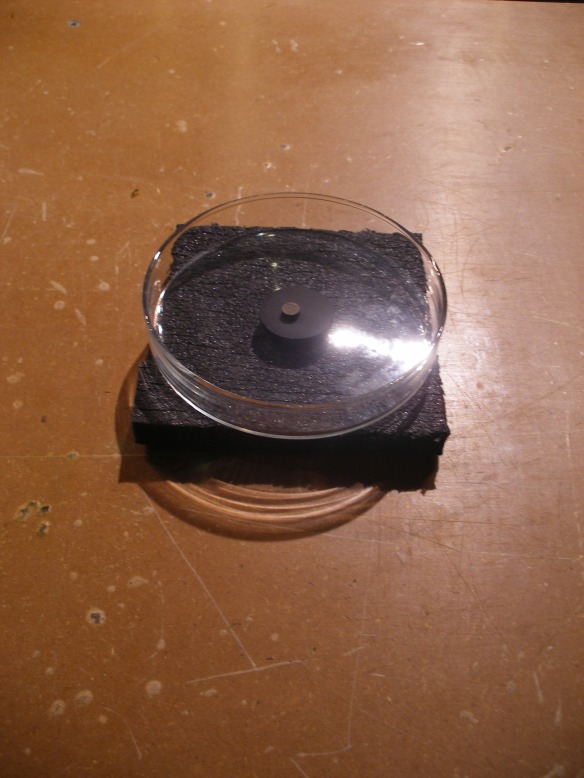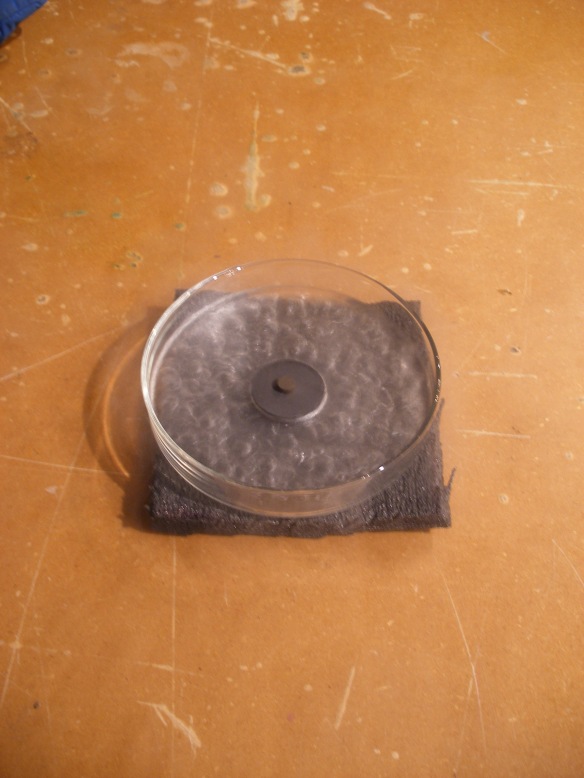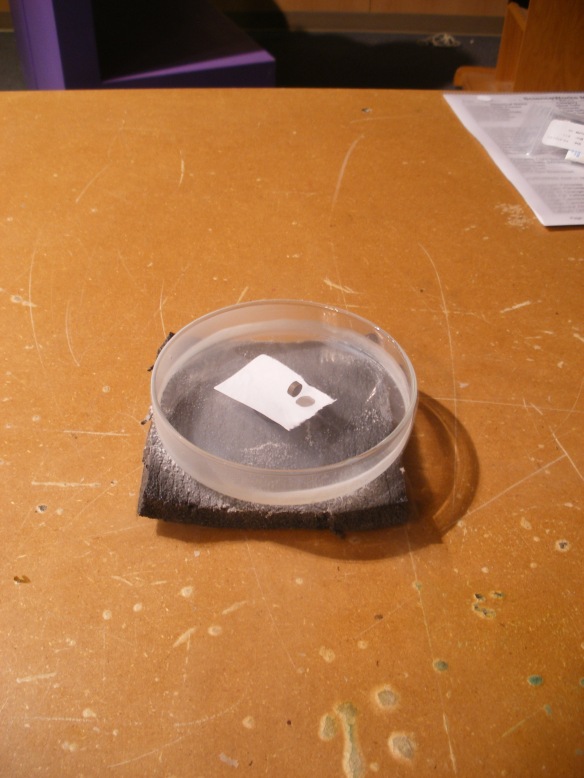A superconductor is a material that has no electrical resistance when it is cooled to temperatures approaching absolute zero. These materials display something called the Meissner effect—in short, they make magnets levitate! It’s very cool, both figuratively and literally.
The superconductor in this project is YBCO, yttrium barium copper oxide (chemical formula YBa2Cu3O7). It’s a famous high temperature superconductor, “high temperature” in this case meaning 92 K or about -294°F. Toasty warm! As frigid as that is, though, it’s well above the boiling point of liquid nitrogen (77 K, -321°F), so by pouring liquid nitrogen around the YBCO, we can easily get it to go superconductive.
Here’s our pyrex petri dish, insulated with some foam so that the table doesn’t suck all the cold out of it. The disc of YBCO is in the center (for scale, it’s about one inch across), with the neodymium magnet sitting on top (not floating as of yet).
Now we get to decant some liquid nitrogen! I love that stuff.
Then we pour the liquid nitrogen into the dish.
When the YBCO reaches its critical temperature (it doesn’t take long), the magnet floats!
It was difficult to get a sharp photograph, and the black-on-black nature of the two materials didn’t help, so we slipped a piece of paper between the YBCO and the magnet. You can see by the shadow that the magnet is indeed floating.
And here’s a video:
How does it do that? Well, the short answer is that superconductors push on and rearrange magnetic fields, so that the magnet is buoyed up. Okay, but…how does it do that? This is what’s going on (at least, as understood by someone who’s neither a physicist nor a materials scientist):
When the YBCO is above its superconducting transition temperature (remember, that’s 92 K), it’s just a lump of non-conductive, non-magnetic stuff. The magnetic field lines of a nearby magnet go right through the material; the magnetic flux is permeating the YBCO. There’s nothing exciting happening—the magnet just sits there, surrounded by its normal field.
When the YBCO is cooled to below its transition temperature, it becomes superconductive. The presence of the permanent magnet induces electric currents within the YBCO, which have their own magnetic fields that oppose the field of the permanent magnet (hooray for Faraday’s law!). The material is now diamagnetic: acting in opposition to the nearby magnetic field. The magnetic field within the YBCO has been canceled.
However, the total magnetic flux is conserved, so if there’s no flux inside the YBCO, it must be outside. In other words, the superconductor pushed all the field lines outside itself. This phenomenon of excluding internal magnetic fields is the Meissner effect.
The poles of the induced magnetic field are arranged so as to repel the poles of the permanent magnet. (If the permanent magnet’s north pole is downwards, then the induced field has an upward-facing north pole.) Remember that this is all happening in a superconductor, that is, an environment with no electrical resistance, so the induced currents can change extremely easily as the magnet moves, adjusting as needed to keep the levitation going.
And that’s one of the wonders of electromagnetism!





